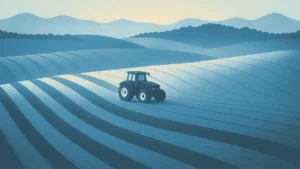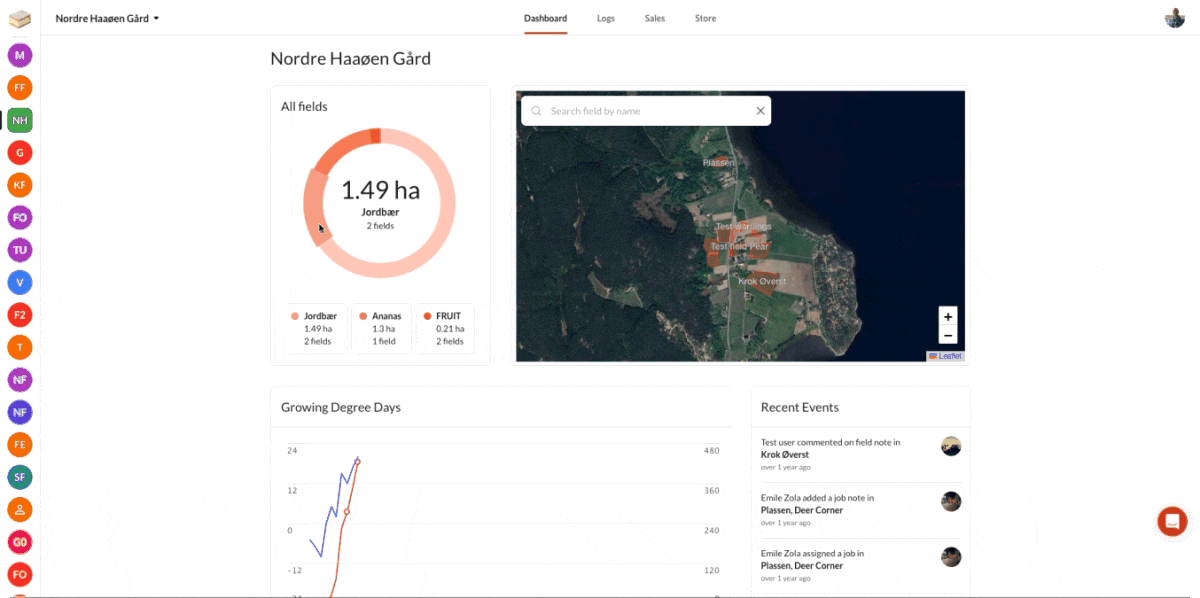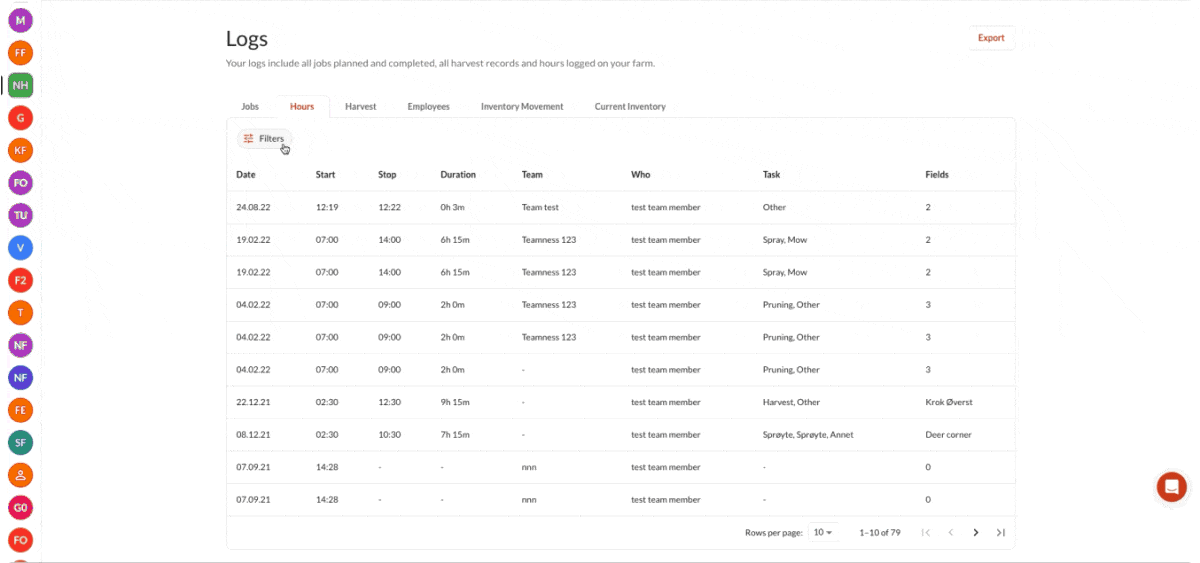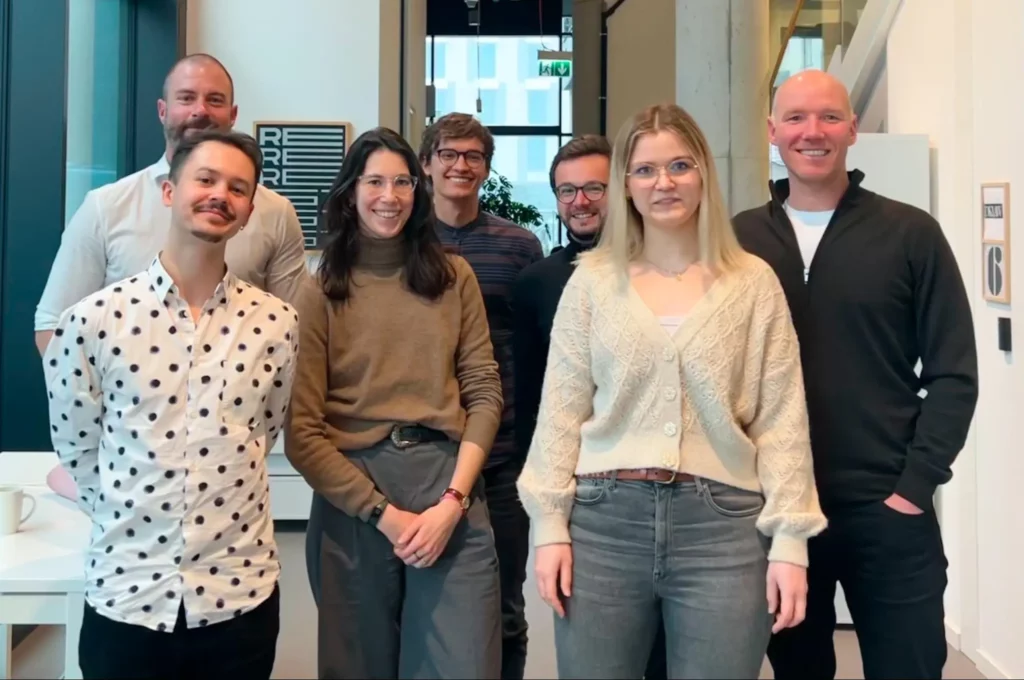Dataviz for Agtech – Farmable Case Study
Dig into this case study of how we helped Agtech startup Farmable improve the yield of their web portal with tailored data visualizations and smart updates.

The combination of data visualization and agriculture might not be the most obvious fusion of technology and industry. But when Black Label met Farmable in 2020 we quickly discovered that we had exactly the frontend skills and tools they were missing to enhance their product ecosystem. For almost four years, our custom data visualizations, smart architecture updates, and streamlined code supported Farmable’s noble mission of digitizing the farming industry across the EU and globally.
Meet Farmable – A Unique Agtech Startup
Farmable is an Agtech company founded outside of Oslo, Norway, quite befittingly, on a farm. It was from his family’s apple farm that Founder and CEO Lars Petter Blikom came up with the idea, in part out of necessity, to create an ecosystem of applications aimed at simplifying farm management. The platform he and his team of visionaries built allows for field mapping in order to gather data on pesticides, fertilizers, and harvests at any time and place. The collected data helps manage fields and generate intelligent reports which are essential for audits and certification. Their mission is to transform how farmers collect, organize, and use data. It is the perfect recipe for a startup: a very real problem – and a very real solution.
What is Agtech? – Technology that Connects the Agriculture Industry
Before we jump into the Farmable project itself, let’s take a quick step back. If you haven’t encountered the term before, Agtech is short for Agricultural Technology, which refers to innovations and modern technologies applied in agriculture to enhance efficiency, productivity, and sustainable development in agricultural production. Agtech encompasses a wide range of technologies, such as information systems for farm management, robotics, drones, artificial intelligence, biotechnology, and the Internet of Things (IoT).
These technologies enable crop monitoring, optimization of natural resource usage, automation of processes, and the introduction of more precise production methods, leading to greater profitability and minimizing environmental impact. Thanks to the development of Agtech and companies like Farmable, farmers now have access to more advanced tools that support sustainable agriculture, increasing its efficiency and improving resilience to changing climatic conditions.
Planting Seeds: Initial Project Challenges
Black Label and Farmable officially collaborated from 2020 to 2024. Farmable was facing challenges with scaling the frontend of their newly developed web portal, which was designed for a different customer segment but relied on the same backend infrastructure as their main native app.
As Farmable expanded its offering with a web portal tailored to new types of customers, it became clear that a more suitable frontend setup was needed to deliver features quickly and effectively. Black Label worked almost exclusively on the frontend of the new web portal, focusing on optimizing its architecture and tooling to improve maintainability and ensure smooth frontend performance.
Additionally, the data management system used for the new portal also needed an overhaul. The data collected on agricultural processes and crop parameters were not properly organized or displayed within the web portal, making it difficult for farmers to access essential information.

Another significant issue was the use of a technology stack that didn’t fully match the nature of the web portal. The desktop version served primarily as a tool for viewing, parsing, and downloading data, with limited direct user interaction. Despite this challenge, the portal was built using Redux, a state management library that works best in highly interactive applications, such as collaborative editors or real-time dashboards. While Redux is a powerful and respected tool, in the context of the web portal it introduced unnecessary complexity. The code became harder to maintain, and implementing new features required substantial effort. Architectural limitations also led to increased development costs and frequent integration issues between the frontend and backend, particularly when syncing data from the web portal with the existing backend services.
Furthermore, the quality of the code did not meet the requisite standards, leading to frequent errors and longer bug-fixing times. Managing this code became costly and time-consuming, and the process of implementing fixes was inefficient. As a result, Farmable had to take action to improve system stability, streamline processes, and ensure the web portal was ready for further growth.
To address these challenges, Farmable decided to collaborate with Black Label, initiating a comprehensive review and optimization of the portal’s frontend architecture. One of the key steps was replacing Redux with a more suitable solution tailored to the specific nature of the web portal. Although commonly used in complex, interactive platforms, it introduced unnecessary overhead in a product centered around data presentation. The decision to refactor the architecture was driven by a desire to simplify development, improve maintainability, and ensure the app could scale smoothly. As a result, Farmable gained a more stable and efficient system that was better prepared for future growth and evolving user needs.
Field Expansion: Addressing Architectural Changes
During the development process, the Farmable team encountered some doubts about the need for significant architectural changes. Introducing a new technological foundation while the web portal was already evolving rapidly posed a clear challenge. There were concerns that adopting new solutions midstream could introduce additional complexity and potentially slow down progress.
“We decided together with the Farmable team to simplify the architecture of the web portal – not to criticize anything, but to deliver new features faster and better meet the users’ needs.” – Sebastian Wędzel, Frontend Developer at Black Label
Farmable also expressed some reservations about whether these changes would truly yield positive results, especially considering the resources already invested in the current web portal architecture. There was a fear of technological risk related to potential delays that could affect user experience.
Black Label tried to approach these doubts with professionalism and pragmatism as best we could. Our team didn’t view Farmable’s issues as obstacles but as a natural stage in the project’s development that required modern solutions and a more structured technological approach. In this way, instead of focusing on past mistakes, Black Label focused on possible improvements that would allow Farmable to develop dynamically.
Thanks to this attitude and understanding of the client’s doubts, Black Label provided full support at every stage of the transformation, implementing technologies that allowed for a smooth transition through the modernization process and solving all of the challenges we encountered. What were some of those, I hear you ask?
Removing Pests & Adding Fertilizer: Our Key Contributions to the Project
Farmable’s collaboration with Black Label came at a pivotal moment in the development of the web portal, which was facing numerous challenges related to frontend performance, maintainability, and data presentation. Black Label, as a team of technological experts, analyzed the issues Farmable was facing and proposed specific solutions that alleviated the existing difficulties, enabling the portal’s continued growth and improving user experience. Here’s how Black Label helped solve the key issues:
“Farmable is a great example of a fast-growing company — and that always means the technology needs to keep up. That’s exactly where we came in to help.” – Dominika Wielopolska-Fonfara, Scrum Master at Black Label
Improved Performance & Flexible Architecture
Solution: Black Label modernized the frontend architecture of Farmable’s web portal and optimized the code to boost speed and enable real-time data handling. An infrastructure audit led to further improvements in stability and flexibility, ensuring the platform remained reliable as usage grew.
Data Management & Presentation Issues
Solution: Black Label optimized data organization within the portal, implementing a system that allowed for better data segregation and easier access for users. As a result, farmers gained an intuitive way to view their crop results and make more informed decisions.
Problems with Frontend Technology
Solution: Black Label improved the frontend architecture of the web portal by switching to a lighter approach that better matched its main data-driven purpose. While the original tool was highly capable, it added unnecessary complexity to this use case. This change streamlined the code, improved maintainability, and accelerated development.
Code Quality Issues & Maintenance Difficulties
Solution: The introduction of modern code-quality monitoring tools like Jest, along with end-to-end testing using Cypress, helped eliminate errors and increased the portal’s stability. Additionally, Black Label refactored existing code sections to make the codebase more modular and easier to expand.
Data Synchronization Issues Between the Frontend & Backend
Solution: Black Label improved communication between the portal’s frontend and backend of the app ecosystem by implementing more efficient data synchronization mechanisms. As a result, all changes made by users were instantly reflected in the system, significantly improving data consistency within the app.

Harvest Season: Positive Transformation & Project Successes
With Black Label’s support, Farmable underwent a significant transformation that not only improved the web portal’s performance but also boosted the company’s business growth. After implementing the proposed changes, the web portal became much more stable and user-friendly. The issue of managing large amounts of data was successfully addressed within the web portal, giving farms a tool that simplified their data access and improved daily operations. As a result, Farmable’s customers began achieving better results and saving time, leading to increased positive experiences.

This collaboration was not only a technological shift – it was a mutual learning process. The Black Label team evolved alongside the project, continuously adapting tools and solutions to the changing requirements of the platform. This close alignment between development and business needs allowed the team to stay efficient and flexible at every stage.
Special thanks go to Lars Petter Blikom, Founder and CEO at Farmable, for the trust placed in the architectural transformation. Embracing change at a strategic level is never easy, and it was this openness to innovation that allowed the project to move forward with confidence.
With Black Label’s support, Farmable was able to enhance the entire platform’s stability and responsiveness, effectively handling the increasing volume of data. This collaboration played a vital role in progressing the company’s technological development to meet growing user needs.
Conclusion – The Power of Transformation Through Innovation

Farmable’s journey is a testament to the power of collaboration and innovation. By addressing key technical challenges and optimizing its infrastructure with Black Label’s expertise, Farmable has been able to overcome significant hurdles and unlock new growth potential. Our partnership shows that when teams evolve together with a product, adapting their tools to match changing requirements, the result is not only better code – it’s long-term resilience.
This case study demonstrates that with the right collaboration and a commitment to embracing change, any company – no matter the scale or industry – can successfully evolve and thrive in a competitive landscape. If your business faces similar challenges, remember that transformation is always possible.
Take inspiration from Farmable’s success and explore how modern solutions can drive your own success forward. Overcoming challenges is a natural part of product development. Let’s walk through this process together. We invite you for a free consultation here.




